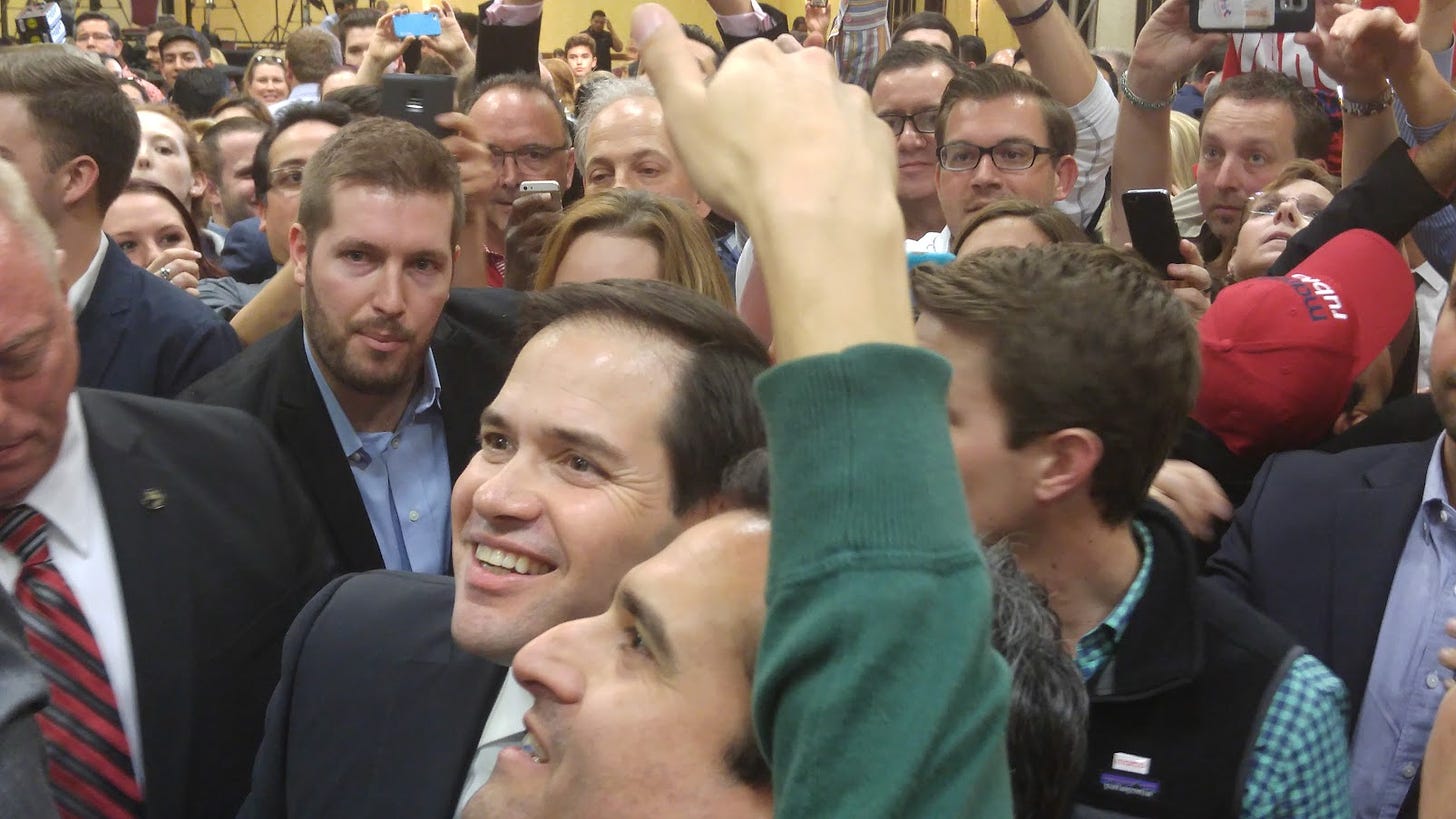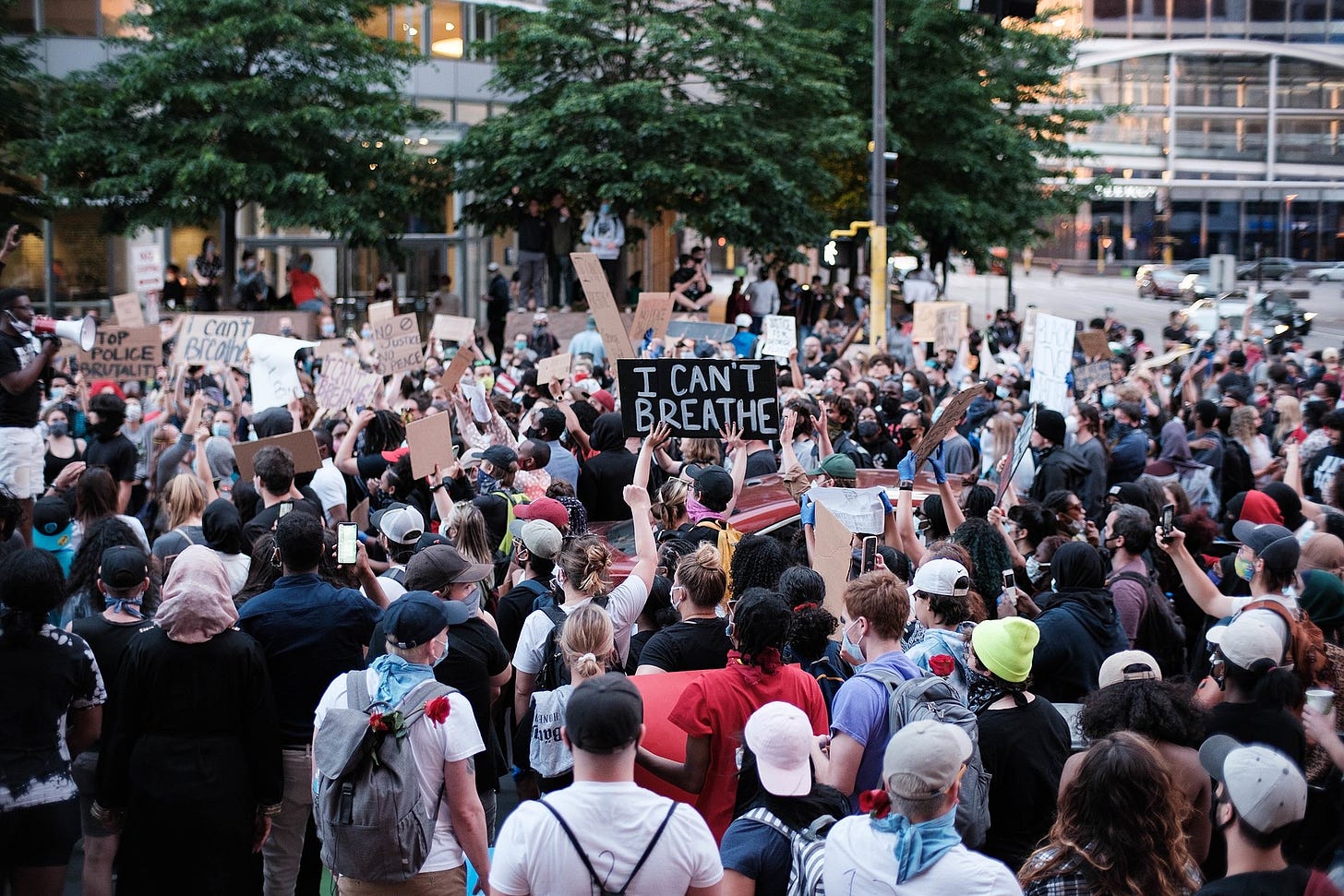Recently, a talking point on social media has contrasted the deadly shootings that involved QAnon adherent Ashli Babbitt, who was killed in the January 6 insurrection, and Daunte Wright, a black motorist killed by police in Minnesota last week. The social media posts question why Officer Kimberly Potter was charged in the death of Wright but no charges were filed against the officer who killed Babbitt. The simple answer is that the two incidents were very different and governed by different standards for the use of force.
Both killings were caught on video so we have a very good idea of what happened in both cases. In the case of Ashli Babbitt, even though Capitol Police do not wear body cameras, there are multiple videos of the moment of her death because the rioters themselves were documenting their attack on Congress. One video, available on the Washington Post site with labels and captions, gives context for the situation.
Capitol Police officers were backed against a door outside the “Speaker’s Lobby” of the House of Representatives. Rioters are confronting the officers and punching the glass on the door. Babbitt is at the front of the crowd and she can be seen talking to the officers. Members of the crowd offer to “make a path” for the three officers with their backs against the door to withdraw. When the officers move away, the crowd tries to break down the door. One rioter can be seen hitting the door, which has been reinforced with chairs on the other side, with what appears to be a baseball bat. An officer on the other side of the door who is not fully seen points a gun at the mob.
The video goes to a split-screen as members of the mob yell that they see a gun. Babbitt is boosted through a broken window on the right side of the door opposite from the officer with the gun. The officer fires and Babbitt falls backward out of the window.
The Youtube video below has a different angle. The doorway is viewed straight-on and Babbitt, wearing a star-spangled backpack and with some sort of flag apparently wrapped around her waist, is seen attempting to pass through the broken window. The officer fires and she falls backward to the floor as the crowd scatters.
In the case of Daunte Wright, we do have body camera footage. Wright was originally pulled over because his car had expired tags, but the officers then realized that there was a warrant for his arrest.
In the video, we see three officers attempting to handcuff Wright when he breaks free and gets back into his car. A brief struggle ensues and Officer Potter, a 25-year veteran of the force and a training officer, can be heard yelling, “I’ll tase you,” but it is obvious that she is holding her pistol. She announces, “Taser, Taser, Taser,” and the officer struggling with Wright backs away as Potter fires.
Her reaction is swift and horrified. She screams, “Oh my [censored]. I shot him.”
Wright attempts to drive away with his girlfriend, who was also in the car but is mortally wounded. He collides with another vehicle several blocks away and is pronounced dead at the scene per MPR News.
The two shootings could not be more different. Ashli Babbitt was an aggressor, part of a mob that was actively trespassing on federal property and attempting to attack members of Congress. Daunte Wright was a fugitive who was attempting to evade arrest and flee. Different rules apply to the different circumstances.
Although laws vary from state to state, police are generally allowed to use deadly force in situations where their actions are “‘objectively reasonable" in light of the facts and circumstances confronting them, without regard to their underlying intent or motivation.” This standard stems from the Supreme Court’s decision in Graham v. Connor (1989).
This built on an earlier decision, Tennessee v. Garner (1985), in which the Court ruled that officers could shoot fleeing suspects but only if such force is “necessary to prevent the escape and the officer has probable cause to believe that the suspect poses a significant threat of death or serious physical injury to the officer or others.”
These two decisions apply directly to the cases of Ashli Babbitt and Daunte Wright. Babbitt was part of a violent mob attacking the Capitol. It is “objectively reasonable” to believe that the officer thought that using lethal force to stop the mob from breaking the doorway was necessary not only to save his own life but the lives of members of Congress and other government employees as well.
A Justice Department press release outlines the legal standard to charge the officer who shot Babbitt:
Prosecutors would have to prove not only that the officer used force that was constitutionally unreasonable, but that the officer did so “willfully,” which the Supreme Court has interpreted to mean that the officer acted with a bad purpose to disregard the law. As this requirement has been interpreted by the courts, evidence that an officer acted out of fear, mistake, panic, misperception, negligence, or even poor judgment cannot establish the high level of intent required under Section 242.
The report on Babbitt’s death concluded that the shooting was justified and that the officer acted reasonably under the circumstances. His actions were ruled to be reasonable in “self-defense or in defense of the Members of Congress and others evacuating the House Chamber.”
On the other hand, Officer Potter had no reason to believe that Daunte Wright wanted to do anything other than get away. The arrest warrant stemmed from an incident in December 2019, more than a year earlier, and Wright was not a threat to the life or property of anyone as he attempted to flee. Potter did not intentionally shoot Wright because the shooting would have clearly been an unreasonable and unconstitutional use of force.
This truth is underscored by the fact that the police department in Brooklyn Center, Minnesota is not even attempting to justify the shooting. Officer Potter submitted her resignation from the force and was herself arrested and charged with manslaughter in what a police spokesman in the video above calls an apparent “accidental discharge.”
The bottom line is that there are two constitutional reasons for police officers to shoot someone. The first is in defense of a life, either the officer’s life or that of some innocent person. The second, which is closely related, is when a fleeing suspect’s escape would pose a threat to someone’s life. In both cases, the officer’s determination of the threat must be “objectively reasonable.”
There is the legal standard for the use of force, but there is also the reality of juries. In many cases, juries set an even higher standard for convicting police officers than the Supreme Court’s already high standard for charging them. As I wrote last week, an Arizona jury acquitted the officer who shot Daniel Shaver in a hotel hallway even though he gave contradictory commands that the intoxicated Shaver tried to obey. The case of the South Carolina police officer who shot Walter Scott, another black motorist, in the back and then planted a Taser on Scott’s body, ended in a mistrial. The officer eventually pled guilty to federal civil rights charges.
One of the few officers to be convicted of a bad shooting was Mohammed Noor. Noor, another Minnesota officer (what’s going on up there?) was responding to a report of a possible rape when he fired through the window of his squad car, across his partner’s chest, at an unarmed 40-year-old Australian woman in her pajamas who had approached the car. Noor was convicted of third-degree murder and second-degree manslaughter and sentenced to 12-1/2 years for the 2017 shooting.
Even if the Capitol Police officer had been indicted for the shooting, there is almost no chance that he (or she, we don’t know the officer’s identity) would be convicted. It would almost have to be a jury of 12 Anons to get a conviction in the case.
On the other hand, Potter may or may not be convicted. She clearly killed Wright unintentionally, but as noted above, juries often give police a lot of leeway.
The deaths of Ashli Babbitt and Daunte Wright resulted from very different circumstances. Different rules applied in both cases, but the officers’ action had to be “reasonable” in both situations. The actions of the Minnesota officer who killed Wright were not reasonable, but the actions of the Capitol Police officer were reasonable in the midst of an attack by a violent mob.
In the vernacular of many Second Amendment activists, the insurrectionist mob f-ed around and Babbitt found out. It’s nothing short of a miracle that Babbitt was the only fatality among the insurrectionists because officers defending the Capitol had adequate justification to shoot many more of the rioters.
Speaking of cops behaving badly, last week video of a disturbing traffic stop from December 2020 in Windsor, Virginia became public. A YouTube video combines the driver’s cellphone video with two body cameras from the officers involved.
The driver of the car, Caron Nazario, an active-duty army lieutenant who is black and Hispanic, was stopped because the officers thought that he did not have a license plate on his car, although a CNN report notes that a temporary dealer tag was in the rear window. Nazario reportedly activated his turn signal and continued driving to find a well-lit area in which to pull over. More than a mile later, he stopped at a gas station.
In the ensuing confrontation, the officers approach Nazario’s vehicle with guns drawn and yell at him with confusing orders. In rapid sequence, the officers tell him to “put your hands out the window and turn the vehicle off,” let me see your hands,” open the door and step out,” and “keep your hands outside the window.”
Nazario asks repeatedly why he was stopped, but the officers never answer the question. Instead, one warns him that he about to “ride the lightning.” When Nazario says that he is afraid to get out of the car, one of the officers replies, “You should be.”
Nazario tells the police at one point that he does not have to get out of the car for a traffic stop. This seems to be his big mistake. The Supreme Court ruled in Pennsylvania v. Mimms (1977) that an “order to get out of the car, issued after the respondent was lawfully detained [for a traffic stop], was reasonable, and thus permissible under the Fourth Amendment.”
The average motorist doesn’t know about the Supreme Court ruling from 40 years ago, however. I didn’t until I looked it up. The officers could have explained to Nazario that the law required him to get out of his car, but instead they increased the tension by repeatedly screaming the same commands over and over.
The officers eventually try to open Nazario’s car door and pepper spray him without warning. Throughout the entire incident, Nazario keeps his hands in view and holds them out the window.
After he is pepper-sprayed, the officers open his door and order him out, but Nazario is still wearing his seatbelt. The officers order him to release the seatbelt, but Nazario still has his hands raised. Nazario announces that he is reaching for his seatbelt, to which the officer responds, “Fine!”
As with many of these incidents, there were mistakes on both sides. Nazario’s temporary tag was not correctly displayed in the holder and he disobeyed a lawful order to get out of the car. On the other hand, the officers did nothing to de-escalate the situation and continuously heightened Nazario’s fear that he was going to be shot.
In the end, the officers end up letting Nazario go. They give him the choice of being charged or to “chill and let it go.”
The CNN report indicated that one of the officers alleged in his report that Nazario “assaulted” him by “striking my hand away” and that the pair gave him “several more commands to comply with orders or he would be sprayed.” The body camera footage does not back up either claim.
The officer who pepper-sprayed Nazario has been fired and the other officer will undergo additional training per CBS News. Nazario has filed a lawsuit against the department, but such suits are notoriously difficult to win.
The incident is yet another example of why we need police reform that includes better training for cops on how to de-escalate potentially violent situations. I believe that this sort of incident is much more common than most of us would care to admit.
Throughout the incident, Nazario remained calm and polite, we don’t know what would have happened if he acted differently, but I don’t blame him for being afraid for his life. That is especially true since Nazario is the nephew of Eric Garner, who was killed by NYPD officers during an arrest in 2014.
Good advice if you are stopped by police is to be calm, be polite, and keep your hands in sight, as Nazario did. Don’t make sudden moves. This is especially true if you are exercising your right to carry. When in doubt, sit still and keep your hands visible. Maintaining a grip on the steering wheel is one way of doing this. It’s also a good idea to become familiar with your state’s laws regarding interaction with police so that you can know both your rights and the limits of the officer’s authority.
If you didn’t read the Racket over the weekend, check out my discussion of President Biden’s retreat from Afghanistan and the new Republican America First Caucus in Congress.
Fro the Racket
https://www.theracketnews.com/p/the-difference-between-ashli-babbitt


